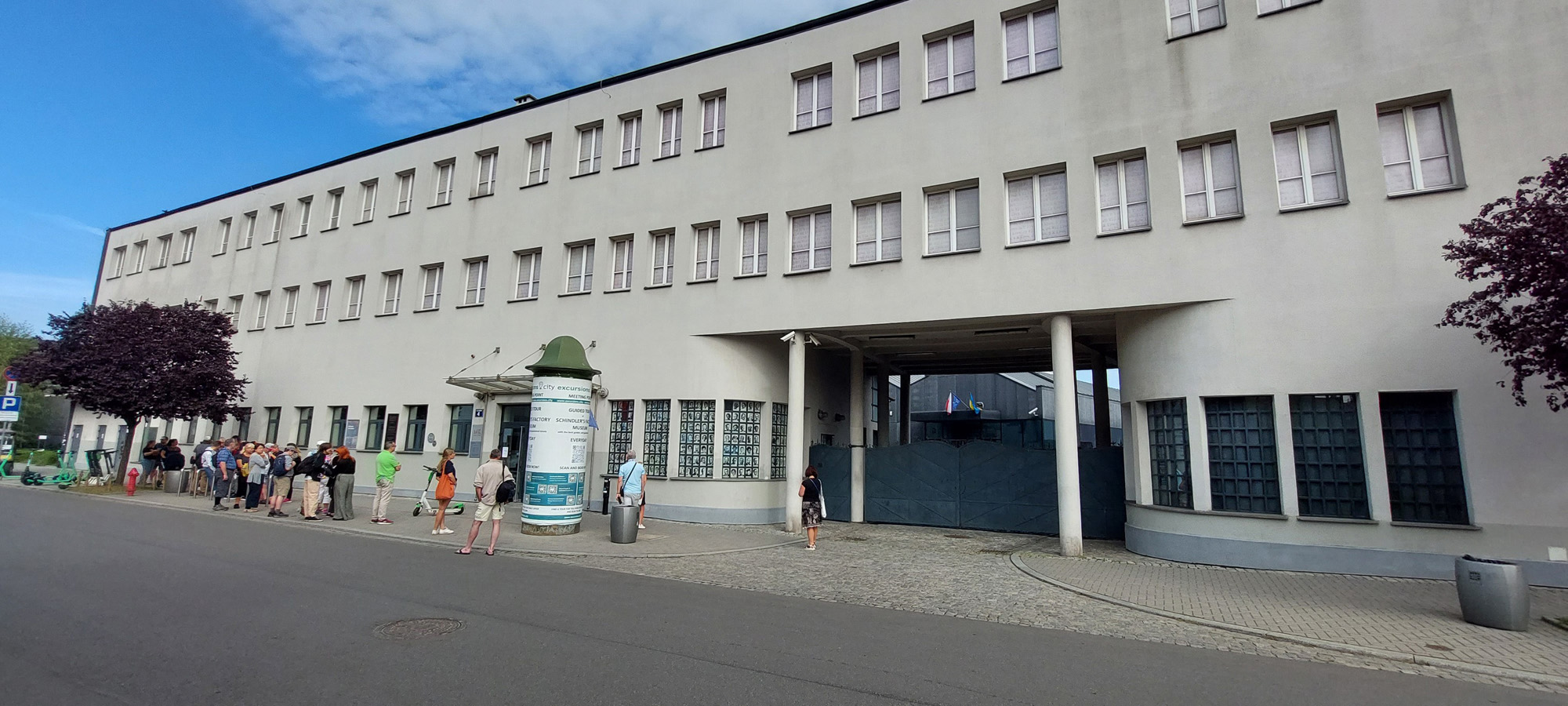 |
Jan & Jan-Jan's Rejseklubben is an exclusive club, with only 2 members, and we do NOT accept new members. |
 |

On 1 September 1939, Nazi Germany invaded Poland and the Second World War broke out. On 6 September, German troops entered Kraków. It was also probably around that time in which Oskar Schindler, a Sudeten German who was a member of the Nazi Party and an agent of the Abwehr, arrived in Kraków. Using the power of the German occupation forces in the capacity of a trustee, he took over the German kitchenware shop on ul. Krakowska, and in November 1939, on the power of the decision of the Trusteeship Authority he took over the receivership of the "Rekord" company in Zabłocie. He also produced ammunition shells, so that his factory would be classed as an essential part of the war effort. He managed to build a subcamp of the Płaszów forced labor camp in the premises where "his" Jews had scarce contact with camp guards. In 1940, Schindler changed the name of the factory to Deutsche Emailwarenfabrik - DEF. Initially, Poles predominated among the employed workers. Year by year, the number of Jewish workers recruited through the ghetto wage office increased. Schindler in this respect was initially driven by economic reasons—employing Jews significantly decreased the costs of recruitment, as they did not receive any compensation. For each Jewish worker, the factory director paid a small fee to the SS - 4 złotys per day for a working woman and 5 zlotys per day for a working man. The Poles remained employed mainly in administrative positions. The number of Jewish workers increased from over 150 in 1940 to around 1100 in 1944 (this is the sum of workers from three nearby factories, barracked in the sub-camp at DEF). From the very beginning of the factory's operation, Schindler used part of its profits to provide food for its Jewish workers. The working conditions were difficult, especially at the stands at enamel furnaces and at ladles with sulfuric acid, with which the workers (predominantly women) had direct contact. Other difficulties included low temperatures in the winter, as well as lice epidemics, which caused mainly dysentery, but also typhus. On the other hand, workers at Schindler's factory received bigger food portions than in other factories based on forced labour. During the existence of the ghetto in Podgórze, Jewish workers were led to the factory under the escort of industrial guards (Werkschutzs) or Ukrainians. When in 1943 the ghetto was liquidated, Kraków Jews who escaped death at that time were transferred to the Plaszow labour camp. Schindler then applied for a permit to establish a sub-camp of the Plaszow camp on the premises of his factory. He argued that his employees had to walk more than ten kilometers from the camp to the factory every day. Bringing them to the factory would increase its efficiency. His arguments as well as bribes made his plan come to life. In the barracks in Zabłocie, employees of DEF and three neighboring companies producing for the needs of the German army were accommodated. The camp was surrounded by barbed wire, watchtowers were built, and an assembly square was situated between the barracks. The nutritional conditions were much better than in the Płaszow camp, especially due to the cooperation with Polish employees - they contacted people in the city, brought letters and food to the Jewish workers. The production in the factory and the camp was controlled, and Amon Goeth, the commandant of the Plaszow camp, was often a guest here. Thanks to Schindler's efforts, the inspections were not so burdensome for the plant employees. It was only after the Płaszow camp was transformed into a concentration camp in January 1944 that the prisoners from Zabłocie were subject to permanent SS control. The work initially lasted 12 hours in a two-shift system, then 8 hours in a three-shift system. As the eastern front approached Kraków, the Germans began to liquidate the camps and prisons in the east of the General Government. It was then that Oskar Schindler decided to evacuate the factory with its employees to Brünnlitz in the Czech Republic. |
Copyright © All Rights Reserved |